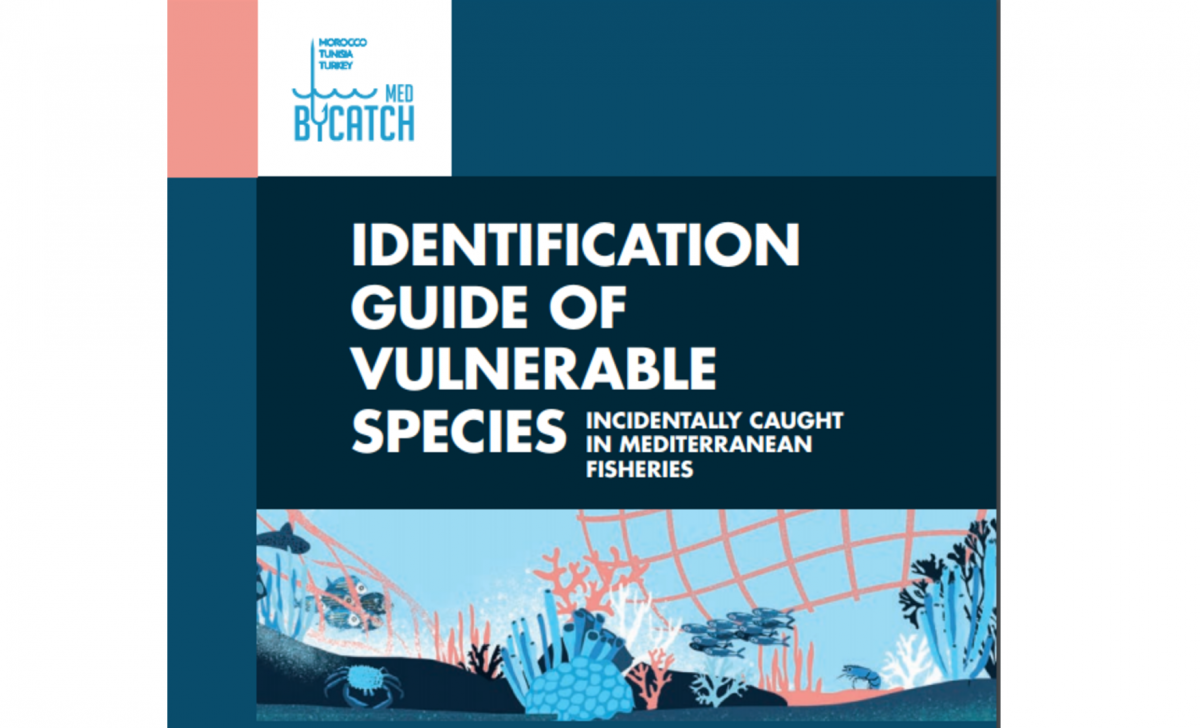Identification Guide Of Vulnerable Species Incidentally Caught In Mediterranean Fisheries
BYCATCH - The Med Bycatch Project has just issued a practical guide to help fishing communities and on board observers identify and monitor vulnerable marine species potentially bycaught in the Mediterranean, such as cartilaginous fish (sharks, rays, chimarera), sea turtles, seabirds, marine mammals, cartilaginous fishes as well as corals and sponges. Building on a partnership with ACCOBAMS, SPA-RAC , BirdLife Europe and Central Asia, MEDASSET and the financial support from the MAVA Foundation, IUCN-Med has coordinated the final compilation and editing of this bycatch guide with the contribution of different experts of the Mediterranean.

Photo: Med Bycatch Project
What is bycatch?
"Bycatch" is the incidental capture of vulnerable species in fishing gear, which poses a threat to marine biodiversity, but also to the livelihoods of fishing communities.
READ THE GUIDE
English bycatch guide: https://portals.iucn.org/library/node/49019
French bycatch guide: https://portals.iucn.org/library/node/49020
Turkish bycatch guide: https://portals.iucn.org/library/node/49021
Croatian bycatch guide: https://portals.iucn.org/library/node/49264
Spanish bycatch guide: https://portals.iucn.org/library/node/49289
Italian bycatch guide: https://portals.iucn.org/library/node/49291
POCKET GUIDES
Italy: Italian | English
Croatia: Croatian | English
Turkey: Turkish | English
Morocco: French | English
Tunisia: French | English
In this comprehensive guide, the description of each species is supported by photographs, illustrations and narrative descriptions that highlight important anatomical structures of each species, as well as the common names in several languages (English, Spanish, French and Arabic).
Moreover, it provides information on the conservation status according to the IUCN Red List: and the protected status under different international agreements, conventions, fisheries recommendations and resolutions, including:
- Convention on the Conservation of Migratory Species of Wild Animals (CMS), such as the inclusion as a “protected species” in Appendix I (Endangered migratory species) and/or Appendix II (Migratory species conserved through Agreements)
- Convention on International Trade in Endangered Species of Wild Fauna and Flora (CITES), inclusion in Appendix I (Species threatened with extinction)
- Agreement on the Conservation of Cetaceans of the Black Sea, Mediterranean Sea and contiguous Atlantic area (ACCOBAMS)
- SPA/ BD Protocol (Specially Protected Areas and Biological Diversity in the Mediterranean) of the Barcelona Convention, inclusion Annex II (List of Endangered or Threatened Species) or III (List of Species Whose Exploitation is Regulated).
- Recommendations from General Fisheries Commission for the Mediterranean) on fisheries management measures.
- Guidelines from the International Commission for the Conservation of Atlantic Tunas on bycatch in tuna and tuna-like fisheries.
Information is also given for those species that should be released alive as they cannot be retained on board, transhipped, landed, transferred, stored, sold , displayed or offered for sale.
This content can be further completed with the document ‘Monitoring the incidental catch of vulnerable species in Mediterranean and Black Sea fisheries - methodology for data collection’ prepared by FAO/GFCM1 with the inputs provided by partner organizations.
http://www.fao.org/publications/card/en/c/CA4991EN/



